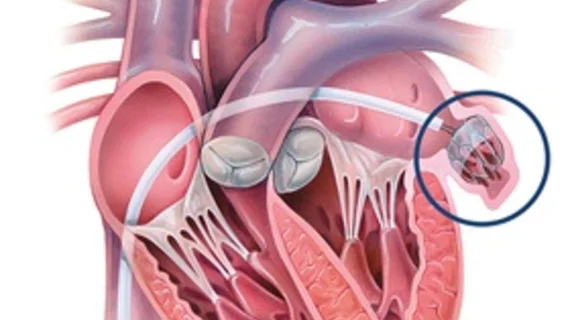Most devices implanted during LAAO procedures are oversized—and patients benefit
Most devices implanted during left atrial appendage occlusion (LAAO) procedures are oversized, according to new research published in Circulation: Cardiovascular Interventions.[1] What is the overall impact on patient care?
“Although LAAO has been shown to be a generally safe procedure, the role of LAAO device sizing in relation to safety and efficacy has not been characterized,” wrote first author Amneet Sandhu, MD, MSc, an electrophysiologist with Rocky Mountain Regional VA Medical Center and the University of Colorado Anschutz Medical Campus, and colleagues. “Device sizing may differentially affect short-term outcomes, with larger devices potentially creating increased risk of pericardial tamponade and smaller devices being prone to significant leak, migration or embolization. Understanding the relationship between device sizing and clinical outcomes may inform preprocedural patient–provider decision-making, procedural planning, and discussions related to the rollout and sizing recommendations for newer generation LAAO devices.”
To learn more about this topic, Sandhu et al. examined data from more than 68,000 patients who underwent a LAAO procedure with Boston Scientific’s Watchman 2.5 device from January 2016 to June 2020. All patient data came from the National Cardiovascular Data Left Atrial Appendage Occlusion Registry.
Overall, 64.4% of patients received an oversized device and another 10.5% of patients received an undersized device. The number of patients receiving an oversized device increased from 2016 (60.3%) to 2020 (66%).
Going against manufacturer recommendations at such a rapid rate is typically associated with key complications. In this case, however, the authors found that oversized devices were linked to a reduced risk of peridevice leak and device embolization. There was no added risk of other complications.
A desire to decrease the risk of periprocedural leak appears to be a primary reason so many operators are implanting oversized devices. The fact that this is only growing more common as time goes on suggests operators are growing “increasingly comfortable” with this treatment choice as time goes on, the authors wrote.
Sandhu and colleagues did emphasize that these patients were all treated with a Watchman 2.5 device. When operators are implanting newer Watchman devices—or LAAO devices from any other vendor in the future—the final result may not necessarily reflect the findings of this analysis.

